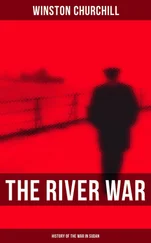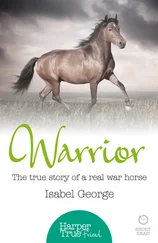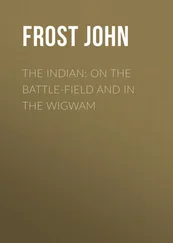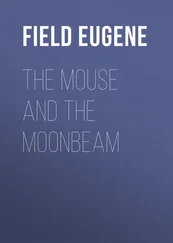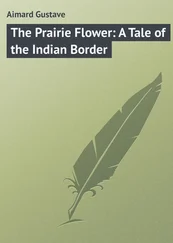Eugene Ware - The Indian War of 1864
Здесь есть возможность читать онлайн «Eugene Ware - The Indian War of 1864» весь текст электронной книги совершенно бесплатно (целиком полную версию без сокращений). В некоторых случаях можно слушать аудио, скачать через торрент в формате fb2 и присутствует краткое содержание. Жанр: Историческая проза, на английском языке. Описание произведения, (предисловие) а так же отзывы посетителей доступны на портале библиотеки ЛибКат.
- Название:The Indian War of 1864
- Автор:
- Жанр:
- Год:неизвестен
- ISBN:нет данных
- Рейтинг книги:3 / 5. Голосов: 1
-
Избранное:Добавить в избранное
- Отзывы:
-
Ваша оценка:
- 60
- 1
- 2
- 3
- 4
- 5
The Indian War of 1864: краткое содержание, описание и аннотация
Предлагаем к чтению аннотацию, описание, краткое содержание или предисловие (зависит от того, что написал сам автор книги «The Indian War of 1864»). Если вы не нашли необходимую информацию о книге — напишите в комментариях, мы постараемся отыскать её.
The Indian War of 1864 — читать онлайн бесплатно полную книгу (весь текст) целиком
Ниже представлен текст книги, разбитый по страницам. Система сохранения места последней прочитанной страницы, позволяет с удобством читать онлайн бесплатно книгу «The Indian War of 1864», без необходимости каждый раз заново искать на чём Вы остановились. Поставьте закладку, и сможете в любой момент перейти на страницу, на которой закончили чтение.
Интервал:
Закладка:
The table of distances which Elston gave, at that time, was as follows: Fort Laramie to Horse Creek, forty-two miles; Laramie to Scott's Bluffs, fifty-eight miles; Scott's Bluffs to Ficklin, nine miles; Scott's Bluffs to Chimney Rock, twenty miles; Scott's Bluffs to Court House Rock, thirty-eight miles; Scott's Bluffs to Mud Springs, forty-six miles. Lieutenant Ellsworth gave the telegraph distances, that is by the wire, as follows: Laramie to Ficklin, sixty-five miles; Ficklin to Mud Springs, forty miles, making a distance of one hundred and five miles, while by the road given by Elston it was one hundred and four miles. These distances were the approximations of various methods of measurement. Elston said that the difference arose in this way; that from Laramie to Ficklin the telegraph line was a little shorter than the highway, but that from Ficklin to Mud Springs it was longer.
At Mud Springs we reported by wire to Major Wood. On this day we marched from three miles east of Ficklin to Mud Springs, being thirty-seven miles. On September 3, 1864, we started early in the morning, and ascended the Bluffs to make the trip across to Pole Creek over "Jules Stretch." The sight northwest was as beautiful as ever. Court House Rock, over twenty-six miles distant, seemed close at hand, and Scott's Bluffs, over forty-six miles distant, were plainly in view. We had watered our horses all they would drink, before we started across. When we reached Pole Creek our horses were very thirsty; the men were not so much so, because they had filled their canteens, and most of the soldiers on the road poured water from their canteens into their hats and gave the horses drink, dividing water with them.
The horses would drink every drop of water out of the bottom of the hat, and then lick the inside of the hat. We reached Pole Creek, and that night camped seven miles below the crossing, which made twenty-eight miles from Julesburg. Antelope were seen by thousands upon thousands in the Lodgepole valley. The plains were literally alive with them. Upon the evening of September 4th we arrived at Julesburg. On the whole trip from Laramie to Julesburg we had not seen a single Indian. Our guide, Elston, and I myself with my field-glass, kept a constant lookout. We saw two or three smoke signals on each side of the Platte, but coming down Lodgepole there was never a signal of any kind; and at night no fire-arrows went up, – so we came to the conclusion that the Cheyennes were all far south, and the Sioux had all gone far to the north. Yet, nevertheless, we never met a traveler nor a team nor a train on the entire march from Laramie down to Julesburg, a distance of 175 miles, which we made in five days, averaging 35 miles per day. The country was absolutely deserted by both Indians and white men.
We camped near the river at Julesburg station, and the men put up their "pup tents," as they were called, and slept under them. We had no regular tents, but only the little canvas sheet that had been invented during the war, and was called a "shelter tent." It was just long enough for a man, and wide enough for two, and stood from eighteen inches to two feet high according to the way the soldier put it up. We stretched our picket-rope between our company wagons, and the boys spread their pup tents wherever they wanted to, without any order or regularity, and, quite tired from the long and rapid ride, they went to sleep and rest. We found quite a collection of people at Julesburg station. They had fortified, and the road was being patrolled by soldiers from both ways. The Colorado soldiers patrolled down to Julesburg and our regiment patrolled from the east up the river that far, and brought through little trains consisting of rapid traveling horses or mule wagons, and stages; but there was no traveling either way on the road, owing to the lateness of the season, by "bull trains." It was too late for oxen to come up from the Missouri River, and it was too late for them to have started back, so that the road was practically clear of the usual freighting trains; but horse trains and mule trains going rapidly under escort were passing almost daily to Denver.
While we had been up at Fort Laramie, there had been great inroads made upon the ranches along the line between Kearney and Cottonwood. Many ranchmen and freighters had been killed, several ranches destroyed, many horses and cattle run off, and a great deal of destruction done in the Platte valley, but it was all east of us, none of it along the line where we then were, but everybody was prepared to resist Indians. Nobody was particularly afraid of them when in a ranch or doby house, or wherever gathered together in squads of armed men. But, nevertheless, there were no white men going out to trade with the Indians, nor were they hunting out in the hills or trapping along the rivers and streams. On the contrary, they were all bunched together in little nuclei along the river, and going from place to place, when they went anywhere, with an escort. But around Julesburg at that time there had been no indications of Indians, and it was believed that the Indians who had inhabited that portion of the country were far off, either to the north or south, and either afraid or without a desire to make any attack in the neighborhood of Julesburg. But this all changed.
Chapter XXIII.
Julesburg – Wood – Ash Hollow – September 7, 1864 – Wolf and Bacon – The Shooting Star – Bancroft Ranch – Building-sod – Paid Off – Doctor Nosely – Thrown from Horse – Bugler
AT THIS time the telegraph station at Julesburg was in good working order, and there were two operators. General Mitchell had gone down the road, and was inspecting different points with a view to the distribution of cavalry troops. We were told to scout the country around Julesburg, and keep advised as to the presence of Indians. So details were made that went out daily in different directions to the south, from which at that time the trouble was apprehended. The Cheyennes were singing war-songs in their camps, and were "making medicine" as it was called; that is to say, getting ready for a military campaign. It was difficult for us to get information, but we got it from time to time through half-breed Indians. We had the guide Charley Elston with us. We were told that we would have to stay at Julesburg over the winter, and that some arrangement would have to be made for winter quarters.
The first thing we had to do was to get some wood for cooking. We had been using "bull-chips," and the boys had not had much cooked food. Captain O'Brien directed me to take the company wagons and an escort, and go for wood. There were no cedar canyons, and no trees anywhere in the neighborhood of Julesburg. The nearest point at which there was anything like a tree was over at Ash Hollow, and that was a day's march to the northeast, on the North Platte. The Captain was a little fearful that Indians might be found over in that neighborhood, and he suggested that I should take the two company wagons and a couple of idle freight wagons that were at the Julesburg station. These were mule teams, and he directed that I take along one of the twelve-pound howitzers, and an escort of thirty men.
Ash Hollow was a very rough piece of land; it was a wide gulch with a dry arroyo running from the south nearly north, into the North Platte River. The distance in a straight line was about thirty miles from Julesburg to the North Platte at Ash Hollow, but it was some little of a detour to get up onto the plateau, and down again to the North Platte, making the road about thirty-five miles. There were no roads in the country, and Elston, the guide, gave me the best of his information in regard to the direction, and very accurate, too, it was. He said that the mouth of Ash Hollow was ten miles east, and about twenty-five miles north; and he stood facing the north, and pointed the direction in which he believed it was, and I may say he pointed it out exactly as it was.
Читать дальшеИнтервал:
Закладка:
Похожие книги на «The Indian War of 1864»
Представляем Вашему вниманию похожие книги на «The Indian War of 1864» списком для выбора. Мы отобрали схожую по названию и смыслу литературу в надежде предоставить читателям больше вариантов отыскать новые, интересные, ещё непрочитанные произведения.
Обсуждение, отзывы о книге «The Indian War of 1864» и просто собственные мнения читателей. Оставьте ваши комментарии, напишите, что Вы думаете о произведении, его смысле или главных героях. Укажите что конкретно понравилось, а что нет, и почему Вы так считаете.



